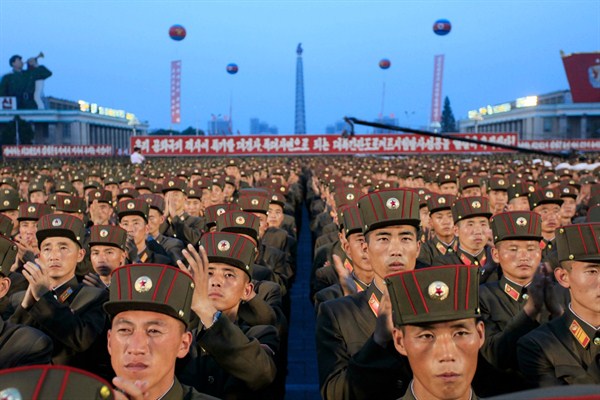Earlier this week North Korea tested its first intercontinental ballistic missile. While Pyongyang already has an extensive arsenal of medium-range missiles, most experts believed it would be several more years before it could field a weapon that could hit the United States. They were wrong.
While the missile launch did not alter the essence of the U.S.-North Korea nuclear crisis, it did add urgency. Now Americans must relearn the lexicon of nuclear strategy they largely forgot after the end of the Cold War and use it to understand North Korea’s intentions and objectives.
Of the two adversaries, North Korea has a more focused strategy, largely because the Kim Jong Un regime sees its standoff with the U.S. as an existential threat taking priority over everything else. Like many dictatorships, the Kim dynasty—Kim Il Sung, Kim Jong Il and now Kim Jong Un—has portrayed itself as beset by external enemies in order to convince the North Korean people to tolerate suffering, deprivation and repression, inculcating them with the belief that the United States is determined to destroy their socialist system. Iraq’s Saddam Hussein and Libya’s Moammar Gadhafi were both overthrown after they abandoned their nuclear weapons program, so the North Korean regime is convinced that nuclear weapons are the best and perhaps the only way to prevent U.S. military intervention.

